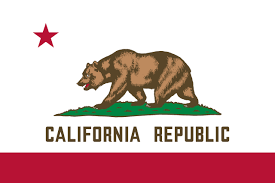CVC 21801: Left Turns and U-Turns
California Vehicle Code (CVC) Section 21801 addresses the rules and requirements for making left turns and U-turns at intersections. This section is essential for ensuring safe and lawful turning maneuvers on California roadways. Here's an explanation of CVC 21801:
Left Turns and U-Turns (CVC 21801):
-
Left Turns at Intersections (Subsection (a)):
- When making a left turn at an intersection, a driver must yield the right-of-way to any oncoming traffic that is approaching from the opposite direction and is close enough to constitute a hazard.
- In other words, the driver attempting the left turn must wait until it is safe to do so and there is a sufficient gap in oncoming traffic to complete the turn without interfering with or endangering others.
-
Left Turns from a Center Turn Lane (Subsection (b)):
- If a center turn lane (also known as a two-way left-turn lane) is present, a driver may use that lane to make a left turn from either direction on a multi-lane road. The driver must still yield the right-of-way to oncoming traffic before entering the center turn lane and completing the left turn.
-
U-Turns at Intersections (Subsection (c)):
- U-turns are generally allowed at intersections in California, unless a posted sign prohibits them. When making a U-turn, a driver must ensure that it can be done safely and without interfering with other traffic or pedestrians.
-
U-Turns in Business Districts (Subsection (d)):
- In business districts, U-turns are prohibited unless a posted sign indicates otherwise. A business district is typically an area with a high concentration of businesses and commercial activity.
-
Right-of-Way and Yielding (Subsection (e)):
- The driver making the left turn or U-turn must yield the right-of-way to all other traffic and pedestrians that have the right-of-way at the intersection.
-
Safe Speed (Subsection (f)):
- When making a left turn or U-turn, the driver must do so at a safe speed, considering factors such as the road conditions, visibility, and the presence of other vehicles and pedestrians.
-
Signal Use (Subsection (g)):
- The driver intending to make a left turn or U-turn must use their vehicle's turn signals to indicate their intention to other road users, giving them adequate notice of their planned maneuver.
-
Penalties for Violation: Failing to adhere to the rules outlined in CVC 21801 can result in traffic citations, fines, and potentially other legal consequences, depending on the nature of the violation and its impact on traffic safety.

DontPayTickets.com
Fight Back California Traffic Violations and Tickets

